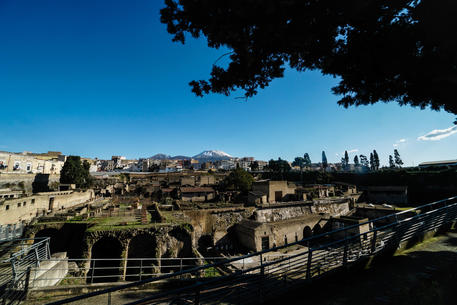(ANSA) - ROME, 28 GEN - Archaeological excavations are
resuming after forty years at the Herculaneum archaeological
park, said park director Francesco Sirano.
The work will begin shortly and will take place in the area
of the ancient beach, the shore of Roman Herculaneum, which was
already partially excavated in the 1980s when the front of the
city facing the sea was brought to light.
"The investigations will be closely tied to aspects of
anthropology, geology, paleobotany, and conservation, creating a
stable connection with the public, in-person and remotely,"
Sirano said.
The beach is currently located about four metres below
today's sea level, a condition that has always posed problems in
terms of managing the water.
In fact, to resolve this problem, specialists at the
Herculaneum Conservation Project (HCP) brought another part of
the beach to light between 2007 and 2010, uncovering
archaeological evidence from both the most ancient phases of the
site as well as the time of the eruption.
The project will take up work from this point and begin in
the coming weeks.
The new dig will allow for reaching the level of the beach as
it was at the time of the eruption, including on the western
side.
Work will concentrate on restoring the ancient level,
including bringing back sand to make it possible to walk the
ancient shoreline with a new itinerary that will go as far as
the Villa of the Papyri, finally connecting the two areas of
ancient Herculaneum that have always been separated.
"We are resuming research on the land with renewed awareness
of the complexity of the site and, thanks to a multidisciplinary
approach, we expect further solid insights," Sirano said.
He said the project was "brought to life in synergy with HCP,
a further component that shows how public-private collaboration
is possible for the benefit of the public good and those who
participate".
The project will take two-and-a-half years and will be
carried out by a multidisciplinary team made up of technicians
from the Herculaneum archaeological park, the culture ministry,
and HCP. (ANSA).
Archaeology: Herculaneum doubles and finds ancient beach
Sirano says new dig starts, with multidisciplinary approach
